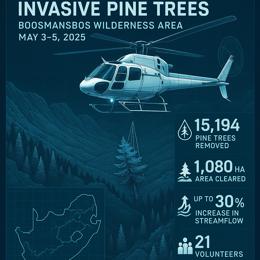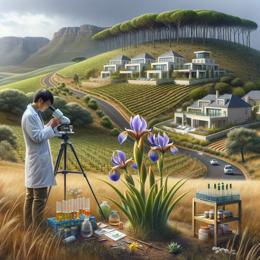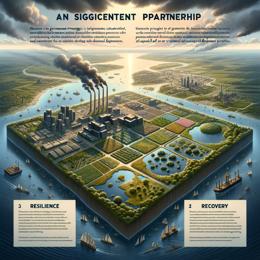Image created by AI
Vaal River Succumbs to Invasive Plants Amid Management Failures
The Vaal River, a life-source for many South Africans, has become emblematic of a broader environmental misfortune. Stretching over 40km from the Taaibosch Spruit to the Vaal Barrage, it now endures a thick verdant canopy of water lettuce and water hyacinth. The invasion of these South American species, which began with the water hyacinth's documentation in the Cape Flats in the early 1900s, is not a mere affliction by nature but a result of decades of inaction and mismanagement.
Both plants, characterized as invasive species by South African environmental legislation, flourish on elevated nutrient levels – often the byproduct of raw sewage and nutrient-rich effluent discharge – causing dire eutrophic conditions. The resulting dense mats not only strangle aquatic life by blocking sunlight and deoxygenating the water but also pose significant human health risks, potentially harboring vectors for diseases like malaria and bilharzia.
The Vaal's predicament is amplified by dysfunctional wastewater treatment works and unchecked industrial discharges, contributing to the nutrient-rich conditions favorable for the explosive growth of these plants. Despite awareness of the issue among authorities as early as 2021, little action was taken, leading to an exacerbated crisis now being faced with dubious use of the herbicide glyphosate.
Glyphosate, while effective in killing these invasive species, poses its own threats – environmental, health-wise, and economically. Its links to cancer and hormonal disruptions urge for a precautionary approach. Dead plant matter decay further feeds eutrophication, seeding a vicious cycle of pollution and invasive growth.
Millions of people and the economic activities they depend upon are affected by this crisis. Swift, holistic, and informed actions back in 2021, targeting the pollution sources, could have averted the downward spiral we witness today. Yet, the response has been criticised for its hasty and haphazard nature.
The water crisis extends beyond the invasive plants; it symbolizes the repercussions of neglect and delayed responses. With seeds capable of lying dormant for decades, the problem is not a quick fix. It necessitates upstream interventions and addressing the root – the floundering wastewater infrastructure.
With the collective expertise and willingness for collaboration, South Africa has the potential to overcome this environmental debacle. It demands accountability, transparency, and informed decision-making to restore the Vaal River and safeguard it for future generations. This struggle is not just about the Vaal; it is a lesson in environmental stewardship and proactive management to prevent future ecological disasters like the dire state of Hartbeespoort Dam.










